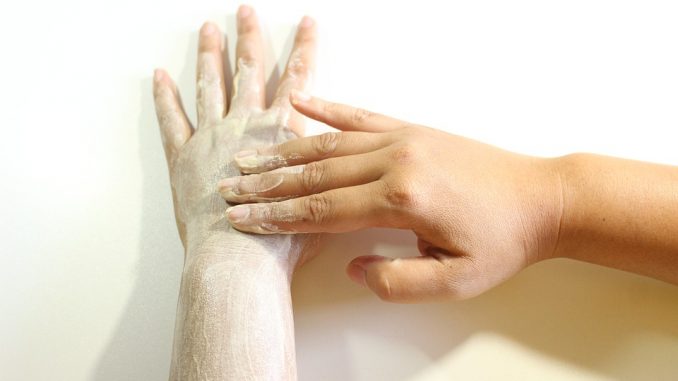
Chemical peeling is a procedure used to remove dead and degraded cells from the skin, thus leaving the skin healthier beneath this layer of cells.
There are several types of chemical peeling, and the dermatologist will choose the right one for your skin type, following a complex discussion and taking into account your medical history.
What is chemical peeling?
Chemical peeling is an intervention performed in the dermatologist’s office, and the specialist applies a “cocktail” of chemical substances on the patient’s face, in several layers. Strong chemical peels containing glycolic acid, salicylic acid and other hydroxyl acids can be used to treat acne scars. This method is usually used to treat the face and, implicitly, post-acne scars, but it can work just as well for the back scars.
Types of chemical peeling
There are three different types of chemical peeling that a dermatologist can perform on patients:
- Superficial peeling – in which milder acids, such as alpha-hydroxy acids, are used to gently exfoliate the skin; this type of peeling penetrates only the outermost layer of the skin.
- Medium chemical peeling – in this procedure, the dermatologist uses glycolic or trichloroacetic acid to penetrate to the middle and upper layers of the skin; these substances are most effective in removing damaged skin cells.
- Deep chemical peeling – the substances used completely penetrate the middle layer of the skin to remove the damaged cells; In this type of peeling trichloracetic acid or phenol (phenic acid) is often used.
What does the chemical peeling procedure entail?
Under the careful supervision of the dermatologist, a single type of acid or a combination of several strong acidic agents is applied to the skin, and then left for a while, for the acid or acids used to penetrate the skin cells.
Many of these acids will be left on the skin to act, while others will be neutralized by applying another product. According to a study, a single application of chemical peeling can improve the appearance of a scar by up to 90%.
Doctors say that chemical peeling is best for treating all types of scars caused by acne and that, often, the technique is used to treat very deep scars.
Who is chemical peeling recommended for?
Chemical peeling is a cosmetic treatment that can be applied to both the skin, hands and neck or back. It is a procedure used to improve the appearance or smoothness of the skin. During this procedure, some special chemical solutions will be applied to the treated area, which will cause the skin to exfoliate and, finally, the visible cleaning of the outer layers of the skin.
Once this visible exfoliation happens, the new skin underneath is softer, looks less wrinkled and less damaged.
If you are wondering in which situations a chemical peeling is recommended, remember that there are several reasons to use this procedure. Chemical peeling can be tried to treat various things:
- Wrinkles and fine lines
- Sun damage to the skin
- Post-acne scars
- Hyperpigmentation of the skin
- Scars
- Skin redness or uneven skin color.
Changing your lifestyle after chemical peeling
After a chemical peeling, it does not mean that the patient should not use beauty products. People who resort to chemical peeling procedures generally have skin texture problems, so the dermatologist will recommend additional skin care: strong moisturizing creams, sunscreen lotions and lotions with sunscreen (SPF), avoiding exposure to sun, a healthy diet rich in antioxidants. Therefore, in completing such interventions, there are lifestyle changes that can help patients with dermatological problems.
A dermatologist can prescribe certain dietary supplements rich in antioxidants and vitamins that keep the skin smooth, elastic and hydrated, a clear skin care routine after a chemical peel and the doctor is the one who will determine how many sessions are needed, depending on each patient.



Leave a Reply